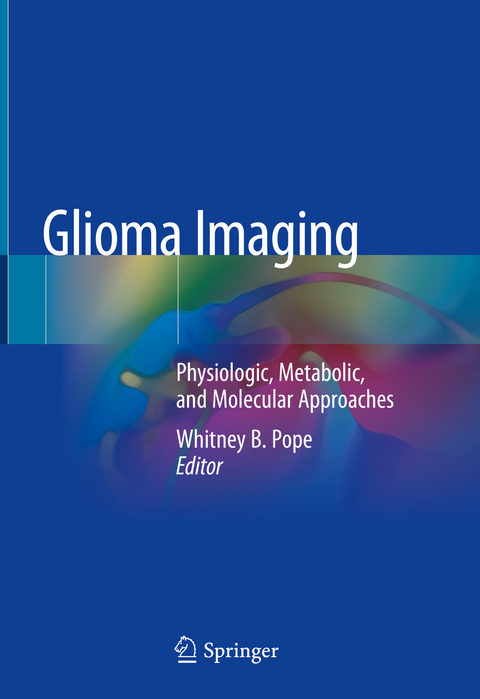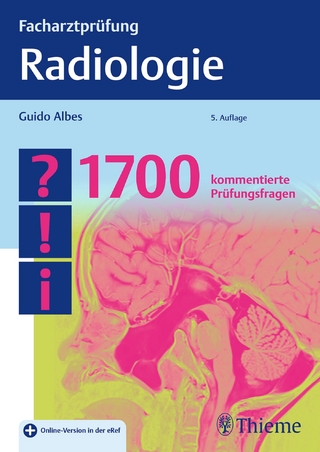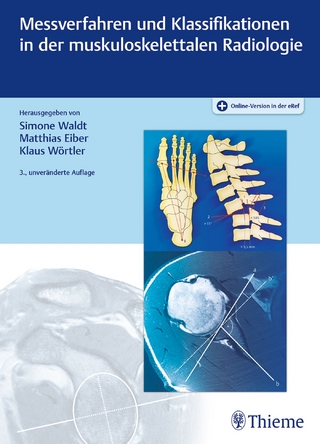
Glioma Imaging
Springer International Publishing (Verlag)
978-3-030-27358-3 (ISBN)
This book covers physiologic, metabolic and molecular imaging for gliomas. Gliomas are the most common primary brain tumors. Imaging is critical for glioma management because of its ability to noninvasively define the anatomic location and extent of disease. While conventional MRI is used to guide current treatments, multiple studies suggest molecular features of gliomas may be identified with noninvasive imaging, including physiologic MRI and amino acid positron emission tomography (PET). These advanced imaging techniques have the promise to help elucidate underlying tumor biology and provide important information that could be integrated into routine clinical practice.
- current standard imaging methodologies used in clinical practice for patients undergoing treatment for glioma and the implications of emerging treatment modalities including immunotherapy
- the theoretical basis for advanced imaging techniques including diffusion and perfusion MRI, MR spectroscopy, CEST and amino acid PET
- the relationship between imaging and molecular/genomic glioma features incorporated in the WHO 2016 classification update and the potential application of machine learning
- about the recently adopted and FDA approved standard brain tumor protocol for multicenter drug trials
- of the gaps in knowledge that impede optimal patient management and the cutting edge imaging techniques that could address these deficits
Whitney B. Pope, MD, PhD is Professor-in-Residence and Director of Brian Tumor Imaging in the Department of Radiological Sciences at the David Geffen School of Medicine at UCLA. He has served on the editorial board of several neurology and neuroradiology journals, including Neuro-Oncology. He has presented and published widely on brain tumor imaging.
1. Indications and Limitations of Conventional Imaging - Current Clinical Practice in the Context of Standard Therapy.- 2. Surrogates for Disease Status - Contrast Enhancement Including Limitations of Pseudoprogression and Pseudoresponse.- 3. The Relationship Between Biological and Imaging Characteristics in Enhancing and Nonenhancing Glioma.- 4. Contrast-Enhanced T1-Weighted Digital Subtraction for Increased Lesion Conspicuity and Quantifying Treatment Response in Malignant Gliomas.- 5. Advanced Physiologic Imaging: Perfusion. Theory and Applications.- 6. Advanced Physiologic Imaging: Diffusion. Theory and Applications.- 7. Parametric Response Map (PRM) Analysis Improves Response Assessment in Gliomas.- 8. Review of WHO 2016 Changes to Classification of Gliomas; Incorporation of Molecular Markers.- 9. Imaging markers of Low Grade Diffuse Glioma.- 10. CEST, pH and Glucose Imaging as Markers for Hypoxia and Malignant Transformation.- 11. MRS for D-2HG Detection in IDH Mutant Glioma.- 12. C-13 Hyperpolarized MR Spectroscopy for Metabolic Imaging of Brain Tumors.- 13. FET and FDOPA PET Imaging in Glioma.- 14. Imaging Genomics.- 15. Radiomics and Machine Learning.- 16. Immunotherapy and Gliomas.- 17. The Path Forward -The Standardized Brain Tumor Imaging Protocol (BTIP) for Multicenter Trials.
| Erscheinungsdatum | 23.11.2019 |
|---|---|
| Zusatzinfo | XIV, 286 p. 109 illus., 69 illus. in color. |
| Verlagsort | Cham |
| Sprache | englisch |
| Maße | 178 x 254 mm |
| Gewicht | 1006 g |
| Themenwelt | Medizin / Pharmazie ► Medizinische Fachgebiete ► Onkologie |
| Medizinische Fachgebiete ► Radiologie / Bildgebende Verfahren ► Radiologie | |
| Schlagworte | brain tumor • Glioma • low grade glioma • Metabolic Imaging • neuroimaging • radiogenomics |
| ISBN-10 | 3-030-27358-X / 303027358X |
| ISBN-13 | 978-3-030-27358-3 / 9783030273583 |
| Zustand | Neuware |
| Haben Sie eine Frage zum Produkt? |
aus dem Bereich


